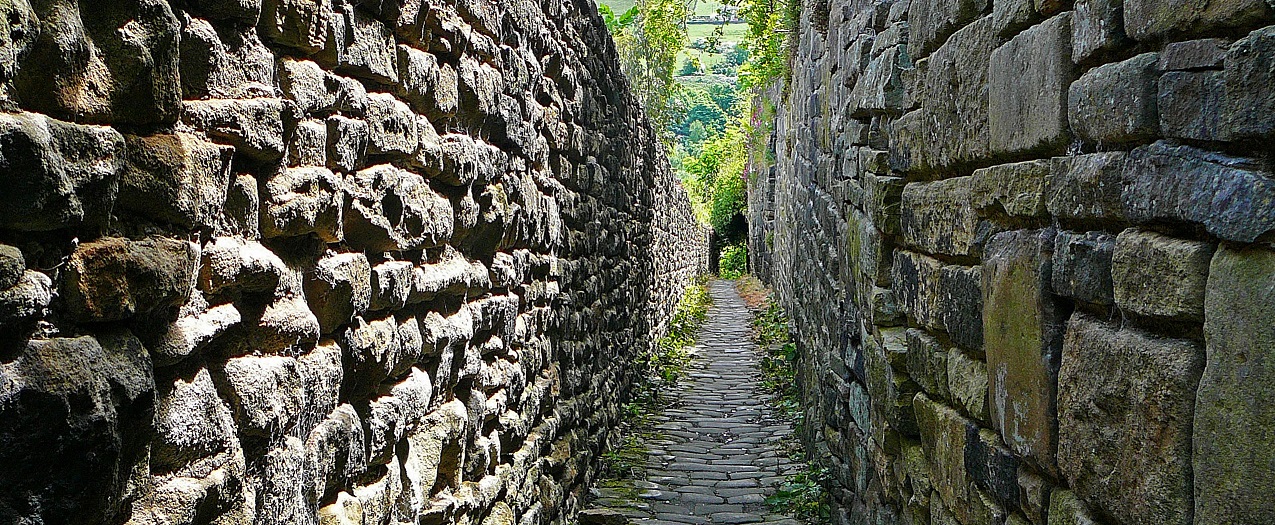
Enter in through the strait gate: for wide is the gate, and broad is the way, that leads to destruction, and there are many which go in through it: because strait is the gate, and narrow is the way, which leads unto life, and there are few who find it. — Jesus, Sermon on The Mount
The Sermon on the Mount has fascinated humanity since it was preached on the mount. It is not hyperbole to say that it is the single most influential speech ever given in all of history. It is so influential that it is nearly impossible to accurately calculate the scope of its impact. The doctrine it conveys is so bedrock to every aspect of modern civilization that we don’t really have any independent frame of reference to gauge it by. One of my personal favorite examples of just how fundamentally this sermon transformed human consciousness is the proclamation, “Blessed are the peacemakers, for they shall be called the children of God.” Before this, it was most common for the blessed members of society to be the warmongers. The victorious General, the savage soldier, the ruthless conqueror. But now the highest prize any person aspires to is the Peace Prize. While war certainly continues, it is seen as an evil that is seldomly considered necessary. Departments of War have revamped themselves as Departments of Defense. War is not in, and it hasn’t been in for a long time. But there are an astounding number of similar and even greater transformative teachings in this Sermon. Every Christian should read this sermon often. The entire New Testament, and by that I mean essentially every statement in the epistles, is a development of some point found in the Sermon on the Mount. This sermon is the Genesis of the church.
One of the most interesting features of the Sermon on the Mount is how visual it is. It is full of metaphor and imagery, which makes its deep truths accessible and understandable. At the same time, the imagery doesn’t drag it down into simplicity. The sermon maintains its sophistication throughout, affording the careful reader treasure troves of meaning and connections. The portion quoted above has all of that. The imagery of two gates and two paths, one broad and wide the other strait and narrow is beguiling in its simplicity. A small child can understand it, but it teases and deliberately resists the attempts of the erudite to fully comprehend it. It is saturated with the essence of reality. It is as perfect a metaphor as one can find. And the King James translation of it is spot on. Modern translations are hamstrung by the incessant simplification and consolidation of the vocabulary. This isn’t a criticism of those translations, they are only working with the tools they have available to them. And for the unlearned, they offer quick access into a world that might otherwise be closed to them. However, the KJV has the benefit of targeting a more well-read general audience and is free to communicate more deeply and significantly.
One example of this nuance is the KJV rendering of “the strait gate”. Modern translations render it the “narrow” gate; which isn’t terrible. Again, given their constraints, it would be hard to do much better. But there is a subtle but significant difference between strait and narrow, which impacts the overall genius of the metaphor — and I am not referring to any of the English word play shenanigans. Narrow describes something that is not wide, which fits the contrasting imagery. But strait conveys the nuance of being strict, rigorous, restrictive. In the broad sense both words are very similar, however narrow is more descriptive and passive, more incidental. Whereas strait is more prescriptive and active. Strait comes from the Latin word strictus, from which we get the words strict and stricture. So, restricted vis a vis restrictive is one way to think about it. Because the modern translations use the narrow adjective to modify gate, they have to use a different word for the way; compositionally it would be awkward to say Narrow is the gate and narrow is the way, even though conceptually there is nothing wrong with it. So they use words like difficult, strict, or constricted. All perfectly serviceable options, but inferior to the classical translation of strait and narrow. The nuance of the strait and narrow formulation is that the way is narrow (restricted) because the gate is strait (restrictive). We shouldn’t make too much of this, but it is an interesting feature of the text, and it is true all the way down to the original Greek.
Another compelling detail in this text is the double-double metaphor of two sets of gates and ways. Let’s simplify the overall meaning of the text down to a single word, “Salvation”, and think about what this double metaphor implies. In the metaphor, salvation is not only a gate that one enters (are saved, 1 Cor 1.18) but a way one walks (shall be saved, Romans 5.9, 10). And also, condemnation is a gate that one enters (is condemned already, John 3.18) but also a way that one walks (perishes, 2 Cor 2.15). What is especially interesting is that we could reconfigure the metaphor to illustrate the spectrum of error surrounding faith and works. We could say that those who believe that salvation is ultimately a by-product of works only have Jesus “The Way”, and those who believe that salvation is entirely disconnected from works only have Jesus “The Gate”. To be clear, this is not a theological argument against either error, but it is an interesting metaphor for each one. And most interesting is that the metaphor was so presciently and perfectly constructed. That is the essence of reality beading through the fabric of the text.
I also am intrigued by how Jesus patiently begins building towards revealing a grand unified truth. In a sense this is the setup for the payoff later on in the ministry, where he will reveal clearly what — or more accurately, who — the gate is, and who the way is. As masterful as the dramatic timing is handled, the real marvel is the patience to allow hard truths to sink in, take root, and effect the necessary change in our minds before pulling back the veil on the next level of understanding. Here Jesus simply offers them the innocuous instruction that there are actually only two options, and that they should not be frightened nor dissuaded from choosing the difficult and painful option, because the outcome of a decision is not just a bigger helping of its initial configuration. All of this is revealed in more detail later in Jesus’ ministry, but he also didn’t dump it on them out of the blue. He starts off the Sermon on the Mount by hinting at his centrality when he encourages the blessed to rejoice in the difficulty and hardship of being in Christ because the reward is great in heaven. So again, the start of a path is not just a sample size portion of the end, or “You can’t judge a path by its gate.” (Yeah, I know, that doesn’t really work, but I couldn’t resist.)

